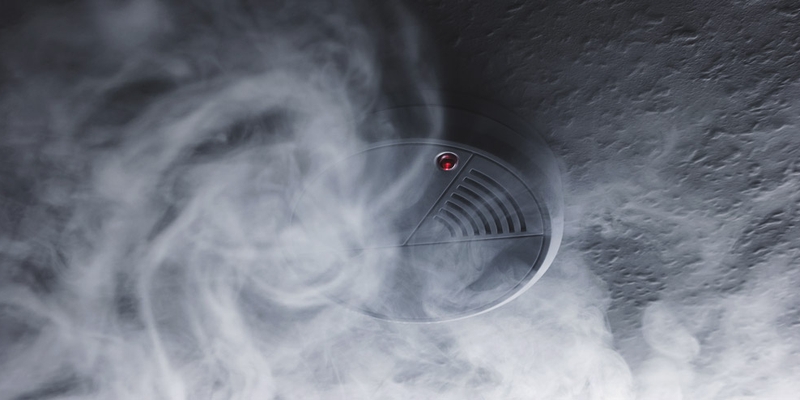
If you are not redirected within 30 seconds, please click here to continue.
Samedi: 10h – 16h HAE

If you are not redirected within 30 seconds, please click here to continue.
If you are not redirected within 30 seconds, please click here to continue.
Double the chances of saving your home from a wildfire with some basic gardening

Table of Contents
- Study of 71,000+ properties involved in wildfires found nearly eight in 10 houses with nearby vegetation were destroyed versus only four in 10 with at least five feet clear.
- According to federal government research, climate change could more than double the cost of fighting wildfires in Canada by the end of this century.
- One couple in Alberta was recently forced to finish putting out a housefire themselves after their firefighting bill of $62,000 dwarfed the $10,000 covered by their insurance.
Clearing vegetation from around your home is not easy work, but new research shows the wildfire protection it creates makes a little gardening well worth the effort.
The Insurance Institute for Business and Home Safety in the U.S. and climate risk analytics firm Zesty.ai studied more than 71,000 properties involved in wildfires between 2016 and 2019 to assess the relationship between vegetation, buildings and property vulnerability.
They used artificial intelligence (AI) to analyze high-resolution satellite and aerial imagery of properties in a wildfire zone to determine the effects a property’s physical environment had on its likelihood of survival.
They found buildings with a high amount of vegetation within five feet of the structure were destroyed in a wildfire 78% of the time versus 40% for buildings with only small amounts of perimeter vegetation. The pattern held true in analysis of other defensible zones ranging from 30 to 100 feet around the property.
“It’s common sense that increased vegetation increases wildfire risk, but this study shows just how powerful individual action can be in safeguarding structures,” said Attila Toth, CEO of Zesty.ai.
“Mitigation actions that can cut risk nearly in half are statistically meaningful to anyone with a stake in this peril.”
The proportion of Canadian homeowners with a stake in this peril is only going to expand with time. According to a Natural Resources Canada study, the ongoing effects of climate change will increase annual fire management costs nationwide by as much as 119% by the end of this century.
“For many provinces, annual costs that are currently considered extreme (i.e. occur once every 10 years) are projected to become commonplace (i.e. occur once every two years or more often) as the century progresses,” the authors wrote. “It is highly likely that evaluations of current wildland fire management practices will be necessary to avoid drastic and untenable cost increases.”
For any homeowners who think those “drastic and untenable cost increases” will be borne by their local fire department, consider the case of Samantha and Dale Zemlack: their Beaver County, Alberta home caught fire in early 2021. The couple ended up having to finish extinguishing the blaze themselves after realizing the firefighting bill had surpassed $62,000, and their home insurance only included $10,000 in coverage.
Don't waste time calling around for home insurance
Use RATESDOTCA to shop around and compare multiple quotes at the same time.
Finding the best home insurance coverage has never been so easy!
Zesty.ai’s research also found that having other structures close to a property increases its wildfire risk, particularly for properties in areas with moderate to high vegetation coverage.
Buildings in those areas that had another structure within 30 to 100 feet were destroyed by a wildfire 60% of the time, compared to a 31% destruction rate for homes without another structure nearby.
“While it is not possible to eliminate wildfire risk, we are not powerless against it,” said Roy E. Wright, IBHS president and CEO. “We must take a pragmatic approach to mitigate risk at all levels and ultimately reduce property damage through data and science.”
“Through collaborations with modelling organizations like Zesty.ai, advanced technology like computer vision and AI help us better understand the impact of these actions at a larger scale. It is encouraging to see emerging progress in just the first months of 2021.”
Wildfire Mitigation Tips: What You Can Do on Your Property
FireSmart Canada partnered with The Co-operators to promote wildfire community preparedness. Among the fire mitigation tips for homeowners and communities they recommend:
- Rake and remove dry leaves and other debris within a minimum of 1.5 metres of a home's foundation. Dispose of collected debris in appropriate trash receptacles
- Clean debris from the roof and gutters and pay attention to maintaining 1.5-metre non-combustible zone
- Get out a measuring tape and see how close wood piles are located to the home; if closer than 10 metres, move at least 10 metres away from structures
- Sweep porches and decks, clearing them of leaves and other combustible debris. Rake under decks, porches, sheds and play structures
- Mow grass to a height of 10 centimetres or less
- Remove items stored under decks and porches and relocate them to a storage shed, garage, or basement. Gasoline cans and portable propane tanks should never be stored indoors and should be located away from the home
IBC provides ways to reduce home fire risks both inside and outside of your home. Those measures include having an emergency survival kit and evacuation plan.
It’s also useful to be mindful of forest fire and wildfire activity in your province. Natural Resources Canada provides fire weather maps online that details where the most significant fire danger risks are in the country by date. Additionally, the Canadian Interagency Forest Fire Centre offers interactive maps with detailed fire information.
- With files from Thompson’s World Insurance News. Used with permission.
Get money-saving tips in your inbox.
Stay on top of personal finance tips from our money experts!










